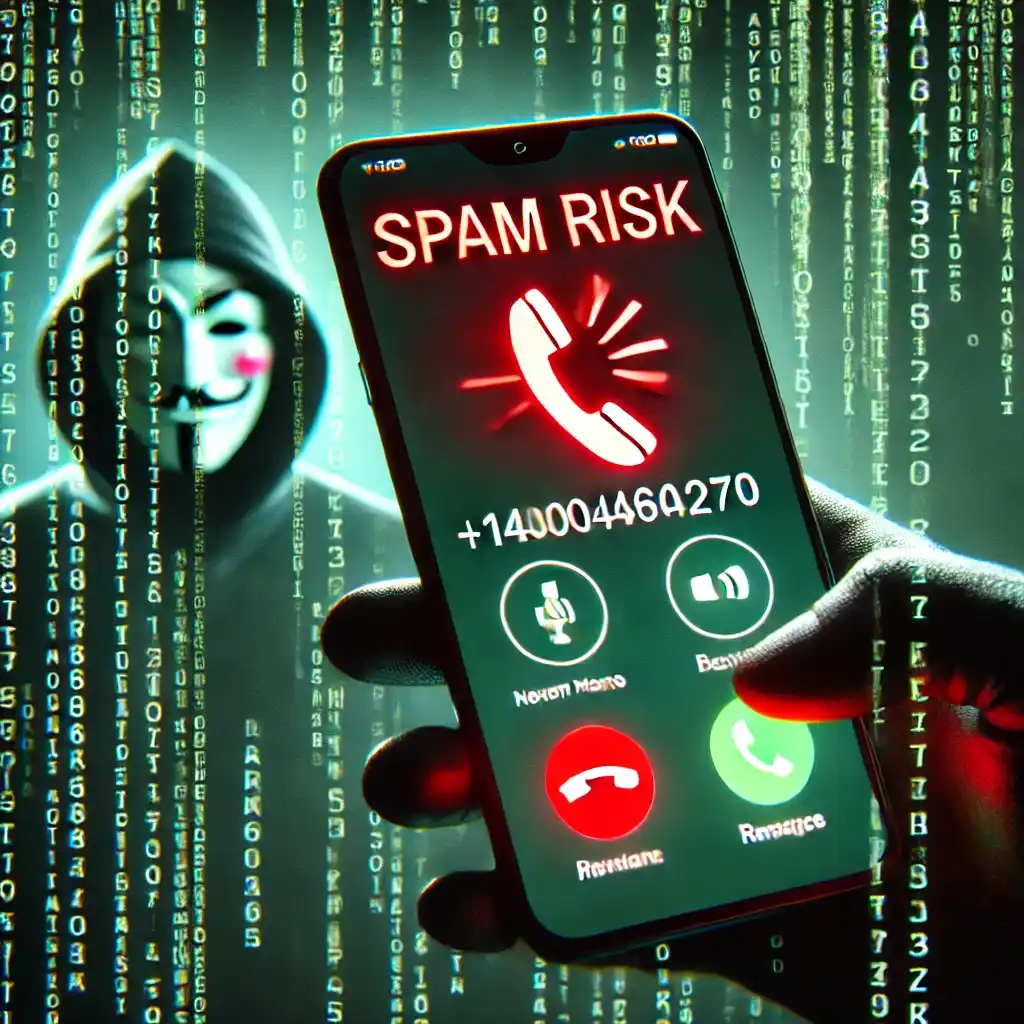Among the many dubious numbers reported by users, +1400360270 (also formatted as 91 1400360270) has drawn significant attention. With over 20 reports and 2,600 lookups, this number has been flagged by our community as a dangerous caller. In this comprehensive article, we delve into the origins, reported activity, and potential risks associated with this number while offering actionable advice on protecting yourself from similar threats.
Overview of +1400360270 / 91 1400360270
The telephone number +1400360270, also seen as 91 1400360270, is primarily identified as a UK-based landline associated with the Honington area. Despite its local origin, multiple reports have indicated an unusual behavior: while it is registered in the UK, several users have reported that their caller ID displays it as a United States number. This discrepancy is a common sign of caller ID spoofing—a tactic often used by spammers to mask their true identity and origin.
Read previous post Who Called Me 08007613372?
Key Statistics
- Reports Received: 20+
- Lookups: 2,600+
- Caller Rating: Considered dangerous by community ratings based on 2 ratings
- User Feedback: Two users have specifically rated this number as Harassing
- Frequently Reported Keywords:
- Spam: Reported 4 times
- Silent: Reported 1 time
These figures highlight the community’s growing concern over this number’s behavior. The blend of its inconsistent geographic indicators and the disturbing call patterns makes it essential for users to stay vigilant.
Detailed Activity Patterns and User Reports
User reports provide a vivid picture of the disruptive and often mysterious behavior of +1400360270 / 91 1400360270. Many individuals have experienced a series of calls that not only confuse but also intimidate. Below are some of the recurring patterns and firsthand accounts shared by users:
Reported Call Pattern
Several users reported a distinct sequence of call activity:
| Date | Action/Status | User Comment |
|---|---|---|
| 9/11 | Call Received | “The call came in and then I was told to leave.” |
| 10/11 | Call Received | “Received the call, no message, then silent.” |
| 12/11 | Instruction to Leave | “The call instructed ‘Leave’.” |
| 14/11 | Call Received | “Another call with no voice message.” |
| 15/11 | Instruction to Leave | “A second ‘Leave’ message was received.” |
| 17/11 | Call Received Today | “Received the call again, still no response from the caller.” |
These repetitive calls, often with no actual voice message or conversation, strongly indicate that the purpose might be to either harass or bait the receiver into a reaction.
User Testimonials
- Caller Pattern Mystery:
One user noted, “This number was showing as a United States number and it called me in a pattern: 9/11, 10/11, Leave, 12/11, Leave, 14/11, 15/11, Leave, 17/11 (today). I have never attended the call.” - Silent and Mysterious Calls:
Another user shared, “Got a call from this number—I picked up but did not find any voice from that end. After a few days, I got another call and again there was no voice.” - Frequent and Unwanted Calls:
“I got calls from this number for two consecutive days at different times. I didn’t pick up, and on CallBlocker, it is displayed as a US number. I think it might be a spam.” - Concerns from Young Users:
Alarmingly, one report from an 11-year-old mentioned, “This number calls me a lot, and I’m just 11.” This highlights that even minors are not spared from such harassment. - Network Frustrations:
SONUU YADAV expressed frustration, stating, “I’m totally frustrated with my network connection—I think I need to port my number into BSNL. This is spam; I have already blocked this number, yet the call still reaches me.”
The diversity in user experiences underlines the importance of understanding both the technical and psychological tactics employed by spammers. The fact that the number continues to persist despite being blocked on various networks suggests sophisticated methods like number spoofing may be in use.
The Origin and Mechanics Behind the Spam Number
Geographic Discrepancies and Spoofing
Although +1400360270 / 01400 360270 is linked to the Honington area in the UK, several reports indicate that the caller ID sometimes displays it as a United States number. This discrepancy is a hallmark of caller ID spoofing—a practice where scammers deliberately falsify the caller ID information to disguise their true identity or location. Spoofing is not only used to bypass call-blocking technologies but also to gain the trust of potential targets who may assume the call is local or familiar.
How Caller ID Spoofing Works
Caller ID spoofing involves using technology to mask the actual number from which a call is made. Scammers often use VoIP (Voice over Internet Protocol) services that allow them to choose the number that appears on the recipient’s caller ID. This technology enables the following:
- Concealment of True Origin: The real geographic location of the caller is hidden, making it challenging for users and law enforcement to trace the call.
- Manipulation of Trust: A caller ID that appears local or from a reputable source can lower the recipient’s guard, increasing the chance of the call being answered.
- Circumvention of Call Filters: Many modern call-blocking apps and built-in phone protections rely on matching numbers with known spam databases. Spoofed numbers can bypass these filters by constantly changing or appearing under different regional codes.
Data-Driven Insights
An analysis of 2,600 lookups indicates that while the volume of lookups suggests significant curiosity and concern, only 20 reports have been formally logged. This discrepancy might suggest that while many are checking the legitimacy of the number, a smaller group has taken the step to report actual incidents. The fact that two separate ratings have categorized the number as harassing reinforces the idea that its activity is both persistent and potentially malicious.
Potential Risks and Dangers

Spam calls like those from +1400360270 / 01400 360270 are more than just a nuisance—they can pose genuine risks to your security and well-being. Here are some of the primary dangers:
1. Harassment and Psychological Distress
- Persistent Calls: Continuous calls, especially those with no voice or with repetitive messages, can lead to significant annoyance and anxiety.
- Impact on Mental Health: For some, especially vulnerable users like minors, these unwanted calls can cause stress and worry.
2. Financial Scams and Fraud
- Bait-and-Switch Tactics: Some spam calls are designed to lure individuals into scams. Once engaged, the scammer may attempt to extract personal or financial information.
- Premium Rate Numbers: In some cases, callers might try to redirect you to premium rate numbers, leading to unexpected charges.
3. Privacy Invasion
- Data Harvesting: Repeated calls can be a method for gathering data on your call patterns and habits, which can then be sold to third parties or used for targeted scams.
- Caller ID Manipulation: Spoofing not only masks the real origin but can also lead to identity manipulation and further privacy invasions.
4. Network Disruptions
- Technical Anomalies: Frequent calls, especially when interfering with your network or call-blocker systems, can create technical disruptions. As one user mentioned, despite blocking the number, calls still managed to get through, which is indicative of advanced spoofing techniques.
Below is a comparison table summarizing the risks associated with spam calls:
| Risk Factor | Description | Potential Impact |
|---|---|---|
| Harassment | Persistent and unwanted calls that can cause stress and anxiety | Psychological distress, reduced productivity |
| Financial Fraud | Scams designed to extract money or personal information | Loss of funds, identity theft |
| Privacy Invasion | Use of spoofed numbers to collect personal data | Data breaches, targeted scams |
| Network Disruptions | Interference with call-blocking systems and mobile networks | Reduced network performance, ongoing call disruptions |
These risks emphasize why it is crucial to be aware of such numbers and take proactive steps to protect yourself.
Protection Methods Against Spam Calls
Given the rising incidence of spam calls, protecting your privacy and personal data is more important than ever. Here are some effective strategies to shield yourself from unwanted callers like +1400360270 / 01400 360270:
1. Use Call-Blocking Apps
Modern smartphones offer a plethora of call-blocking applications that can automatically filter out suspicious calls. Some popular options include:
- TrueCaller: A widely used app that identifies and blocks spam calls based on community reports.
- Hiya: Offers spam detection and caller ID features.
- Call Control: Provides automated call blocking and a personal blacklist.
These apps typically update their databases in real time, leveraging community reports and data-driven insights to ensure you are protected against the latest spam threats.
2. Report Spam Numbers
If you receive suspicious calls, report them immediately:
- National Do Not Call Registries: Many countries offer government-managed registries where you can report spam numbers.
- Telecom Provider Reporting: Most service providers have a dedicated process for reporting spam calls.
- Online Spam Reporting Tools: Websites such as techexplore.co.uk offer spam number checking tools. By entering the number, you can view community reports and further verify its legitimacy.
3. Enable Built-In Phone Protections
Modern operating systems come equipped with built-in features designed to minimize spam calls:
- iOS: Apple’s iOS has a “Silence Unknown Callers” feature that automatically diverts calls from numbers not in your contacts.
- Android: Many Android devices offer “Caller ID & Spam Protection” through Google Phone, which flags potential spam calls before you answer.
4. Practice Caution with Unknown Callers
- Don’t Share Personal Information: Never disclose personal or financial details to an unknown caller.
- Screen Your Calls: Let unknown calls go to voicemail if you’re unsure of their legitimacy.
- Educate Yourself: Stay informed about common scam tactics. Being aware of how spam callers operate is your first line of defense.
5. Utilize Spam Number Checking Tools
Tools like the spam number checking feature on techexplore.co.uk allow you to:
- Verify Reports: Quickly see if a number has been reported as spam or harassing.
- Access Community Feedback: Read user comments and ratings to gauge the risk associated with a particular number.
- Update Your Call Blocker: Cross-reference findings with your call-blocking app to ensure maximum protection.
By adopting these strategies, you can significantly reduce your exposure to spam calls and protect your personal data.
Comparison of Spam Protection Tools
To help you decide which tools might best suit your needs, the table below compares some of the most popular spam call protection apps available today:
| App Name | Key Features | Platform | User Rating | Cost |
|---|---|---|---|---|
| TrueCaller | Real-time spam identification, caller ID, blocking | iOS, Android | 4.5/5 | Free with ads, Premium available |
| Hiya | Spam detection, call blocking, reverse lookup | iOS, Android | 4.3/5 | Free, with in-app purchases |
| Call Control | Automated blocking, personalized blacklists | iOS, Android | 4.2/5 | Free version available, Premium upgrade offered |
| Nomorobo | Specific focus on robocalls, auto-blocking | iOS, Android, Landlines | 4.4/5 | Subscription-based |
Each of these tools has been designed to address different aspects of spam calls, from identifying spoofed numbers to allowing users to customize their blocking settings. When choosing a tool, consider the features that best align with your usage habits and the level of security you desire.
Conclusion
Spam calls are an evolving threat in our increasingly connected world. The case of +1400360270 / 91 1400360270 exemplifies the sophisticated techniques spammers use—from caller ID spoofing to persistent harassment patterns—to bypass conventional security measures. With over 2,600 lookups and a significant number of user reports, this number stands out as one that demands our attention.

